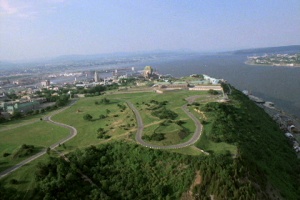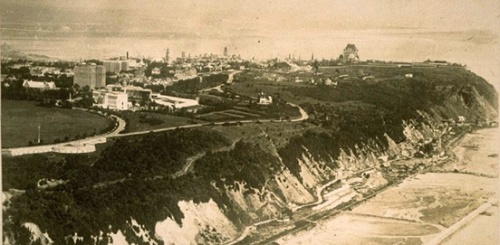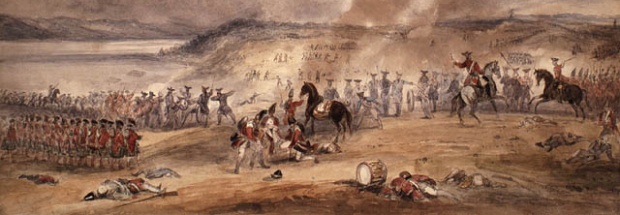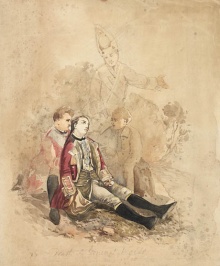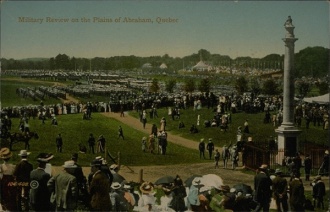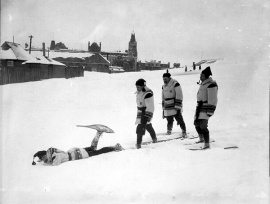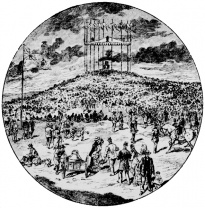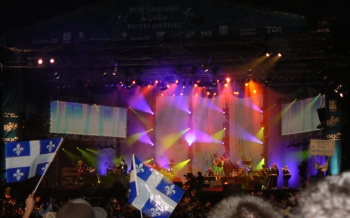Plains of Abraham
par Mathieu, Jacques
Of all the places associated with French heritage in North America, the Plains of Abraham are undoubtedly among the most frequently visited and best known natural and historic sites. The battles that were fought there in 1759 and 1760 between the French and English armies have marked the collective memory as a major turning point in the history of Canada and the Western world. Over the course of the years, in accordance with ever-shifting and evolving loyalties, the site has served to convey a number of symbolic representations and has stood for many ideals. Nevertheless, the real history of the Plains of Abraham remains little known.
Article disponible en français : Plaines d'Abraham
A Park on Quebec City's Cap Diamant Promontory
The history of the Plains of Abraham is closely linked with that of the Quebec City's promontory, Cap Diamant. Visitors to the area have remarked on the natural majesty of the cliffs rising precipitously at the very point where the St. Lawrence River narrows. Jacques Cartier, the "discoverer" of Canada, thought that he would find diamonds on the cliffs and so, the promontory has been known as Cap Diamant ever since. Later, the French, and then the British, built an impressive citadel on the headland that looms above the city. In 1759 and 1760, two major battles were fought on the promontory, which was then later transformed into one of Canada's first fully landscaped parks. Every year, several million people-residents and tourists alike, visit this historic site.
Created in 1908, on the very site of the Battle of the Plains of Abraham for the 300th anniversary celebrations of the foundation of Quebec City, the Battlefields Park, was initially intended to commemorate the defeat of the French troops at the hands of the English on September 13, 1759 and then, with the addition of Des Braves Park, to commemorate the French victory of 1760.(NOTE 1) Today, this natural and historic national park covers an area of more than 100 hectares (250 acres). To the east, the park backs onto the wall of the fortifications and stretches to the west for about a kilometre and a half; to the south, it extends to the edge of the cliffs that rise 100 or so metres [325 ft] above the St. Lawrence River and to the north, it is bordered by Quebec City's Haute Ville [Upper Town].
Many historical monuments and ruins can be found in the park. There is a sundial reminiscent of the experiments carried out in the 17th century by the royal surgeon major to New France, Michel Sarrazin, in an effort pinpoint Quebec City's location on the world map. The park's monuments are particularly linked to military events. Those that commemorate the generals of the two opposing armies (both of whom were killed in action) have been placed in key locations. The monument commemorating the English general James Wolfe stands in the very spot where he died, while that of the Marquis de Montcalm is located at the edge of the park. Inaugurated in 1938, the impressive Joan of Arc monument recalls the courage of the valiant soldiers who fought on the Plains. More than 50 commemorative plaques can be found throughout the park, most of them honouring the officers who died during the various conflicts of the 18th century. The most visible vestiges of the past are the remaining two of the original three Martello Towers that were built at the beginning of the 19th century to defend the city against the possibility of an American invasion. At the entry to the park, the Croix du Sacrifice [Cross of Sacrifice] serves as a reminder of the soldiers who died during the various wars of the 20th century. Finally, the many cannons from various periods of history serve to remind visitors that the military often made use of the site's strategically defensive location.
The Plains of Abraham have also long been valued for their considerable natural beauty. Immediately following its 1908 inauguration, the park was landscaped according to Frederick G. Todd's "grand kingdom of nature" concept. It was an attempt to respect the site's original topography by incorporating its large undulating terrain into the design by creating broad curving avenues that offer ever-changing vistas of the landscape. The greenhouses, the oldest still in existence in Quebec City, are used to grow flowers for the famous Joan of Arc Garden, as well as for the many flower beds and the elaborately-patterned decorative flower beds around the park-which were among the first to be planted in Canada. A small apple orchard serves as a reminder of the labours of Louis Hébert, the first French colonist, who settled with his family in Quebec City in 1617. There is also an "Abraham Martin" rose bush, which is evocative of the popular local name for the park. Finally, there is a nature path where visitors can discover some of the plants and trees that interested botanists and herbalists of the 17th, 18th and 19th centuries.
An Important Historic Site
The park was named after Abraham Martin, a ship's pilot who owned a small section of the promontory. The first time that the name "Heights of Abraham" appears in any written accounts was in the summer of 1759, in Le Journal du Chevalier de Lévis, and then later in British accounts concerning the area. The name was quickly and deliberately taken up by the British since they wanted their military victory over the French troops to be associated with the sacred quest of the biblical Abraham.
The following account describes the events that have left their indelible mark on the way in which the site is remembered.
At the beginning of the summer of 1759, after having taken the Fortress of Louisbourg, the British army and the fleet led by James Wolfe reached the outskirts of Quebec City. The city was placed under siege and bombarded day and night for several weeks. All these efforts proved to be in vain. Montcalm simply waited, entrenched with his army on the Côte de Beauport. As the autumn slowly set in, the British began to worry that they would remain blockaded in Quebec City by winter ice on the St. Lawrence. It was under these trying circumstances that Wolfe decided to attempt a spectacular breakthrough. On the night of September 13th, he and 4,800 elite troops succeeded in climbing the cliffs by way of a small trail that he had seen prisoners using a few days earlier.
At first Montcalm could hardly believe that anybody would attempt such a climb. Once rumours to this effect were confirmed, he rushed off to Quebec City with his soldiers and the Beauport militiamen. He took up position facing the English. Seeing the English firmly entrenched in their position and fearing that the enemy would bring heavy artillery onto the Plains, Montcalm ordered an attack. But while the French troops fired aimlessly at will, Wolfe's soldiers waited for their order to pull the trigger. Once the French were within 60 paces of the British lines, Wolfe finally gave the order to fire. The volley of gunshots was deadly. The result was general pandemonium among the French troops, and so, the confrontation lasted less than 20 minutes. Fatally wounded, Wolfe declared, "I die a happy man." Then Montcalm was wounded in the back as he tried to reassemble his troops. He died 24 hours later, relieved that he did not have to witness the English entering Quebec City. The besieged city did however surrender five days later.
Another battle was fought the following year. During the spring of 1760, the French, led by Bougainville, advanced to attack the enemy who by then occupied the city. The English governor Murray unleashed artillery fire on the French columns and Lévis was forced to take refuge in the forest. Wrongly interpreting this troop movement as a retreat, Murray sent his forces in hot pursuit of the French. At this point the French initiated a manoeuvre to encircle the English, and the fighting became a deadly hand-to-hand combat with soldiers using their bayonets. The English were defeated and, in turn, had to take hasty refuge inside the walls. It was a few days later, with the arrival of supply vessels flying English rather than French colours, that the fate of New France was sealed. The colony was officially handed over to Great Britain under the Treaty of Paris in 1763.
This conclusive English victory over the French for control of North America was widely celebrated. Many paintings, drawings and maps commemorating the conquest were commissioned and all the major battle heroes were awarded all sorts of honours.
Creating the Park
At the beginning of the 20th century, the Battlefields Park was created in response to fears that the promontory, which was then owned by religious order of the Ursulines, would be turned into a residential development. And so, the Ursulines were persuaded to negotiate a land exchange with the Canadian government. The question of the date for inaugurating the new park caused a certain amount of tension between various local and national factions. The Prime Minister of Canada, Sir Wilfrid Laurier, wanted the event to take place in 1909, the year of the 150th anniversary of the Battle of the Plains of Abraham-which was also the date set for the inauguration of the Pont de Québec [Quebec Bridge]. However, the collapse of the bridge while it was still under construction upset this plan. In the end, the Mayor of Quebec City, Sir George Garneau, with the support of Governor General Lord Grey, convinced political authorities to hold the inauguration ceremonies in 1908, on the occasion of the 300th anniversary of the founding of Quebec City.
The celebrations were very grandiose indeed. Eight commemorative postage stamps were issued, a medal was coined and a parade and a naval celebration was organised. It included one American, two French and six British warships. Furthermore, an imposing re-enactment pageant, complete with 4,500 costumed actors, was held in the presence of high-ranking dignitaries including the Prince of Wales. On the program of the pageant were eight historical performances commemorating New France. It concluded with a military parade uniting the forces of the former enemies. The Governor General's interpretation of the celebration was that it marked the advent of an even "greater" Great Britain. Medals were given to the colony's 273 founding families in the presence of the Lieutenant Governor of Quebec, the Prime Minister of Canada, the Bishop of the Diocese of Quebec City and a representative of the French government.
Developing the Park Grounds
Soon after the legislation creating Battlefields Park received parliamentary approval, the committee in charge of developing the park called upon a renowned landscape architect, Frederick G. Todd, (NOTE 2) to draw up park development plans. Not only did the main principle underlying Todd's work incorporate a profound respect for nature, but it also expressed a desire to make the best use of the natural assets available. He proposed an aesthetic approach, which was intended to inspire feelings of awe and wonder in the visitor as they contemplated the whole of the Plains as one "grand kingdom of nature." He designed grandiose entrances, as well as avenues and walkways lined with trees that would cut visitors off from the park's urban surroundings, so that the park, while immense, would have a rather intimate feel.
For a many years, the park was cluttered with buildings that detracted from its beauty. In one area of the park called Cove Fields, there was an arms factory, a cartridge factory and a shooting range. There was also a prison built in 1867, a skating rink built in 1877, as well as an astronomical observatory and a golf course on the park site. When a public works program was put in place during the Great Depression of the 1930s, the arms factory was demolished. For a short time, the skating rink was the focus of the national spotlight in 1912 and 1913, when the Quebec Bulldogs won the Stanley Cup. It was however destroyed by fire in 1918. As for the Cove Fields area, it served as a concentration camp and a hospital during World War II. Soon after the war, the 50 barracks located there were given to poor families who needed somewhere to live. Cove Fields was commonly known as Quebec City's slum quarter, which was finally demolished in 1952.
The park proper is a place where residents of the city can practice all kinds of sports and leisure activities. In fact, many of the competitive and leisure sports practiced there in the 19th century continue to this very day. Golf, cricket, lacrosse and football have all been played on the Plains. Furthermore, at one time the military cavalry organised popular horse races in the park. At the end of the 19th century, it was where Quebec golfers won the Interprovincial Cup five times, and the Quebec City Bulldogs won the Stanley Cup twice. Today, city residents have free access to park paths where they can rollerblade and, in the winter, cross-country ski trails crisscross the park, inviting outdoor aficionados to enjoy the beauty of the park.
The prominent location of the Musée National des Beaux-Arts du Québec [Quebec Fine Arts Museum] in the park also makes the Plains of Abraham a valuable cultural venue. Opened in 1933, the museum was expanded in 1990, with the addition of a former prison to the complex. The adjacent prison building was constructed in 1867 according to plans drawn up by the architect Charles Baillairgé. Furthermore, at the turn of the 21st century, The National Battlefields Commission acquired the HMCS [Her Majesty's Canadian Ship] Montcalm building and renovated and converted it into the Discovery Pavilion. Tourists and residents alike can learn about the history of the Plains by visiting the pavilion's permanent exhibit.
A Site for Major Celebrations
Over the years various events and important celebrations have also taken place on the Plains of Abraham. The key attraction of the first circus to be held on the Plains was a giraffe. A century later the illustrious Buffalo Bill and his 300 horsemen performed in the park. The famous aviator Charles Lindbergh landed in the park to bring medicine to a sick friend. For many years, agricultural fairs and military parades were held on the park site. Other events of an even wider scope and importance have been held on the Plains. For example, the Eucharistic Congress of June 1938 attracted more than 100,000 people. In August 1974, an international festival of French-speaking youth, called Superfrancofête [Super French Speaking Festival], brought 1,500 participants from more than 25 countries to the Plains and attracted at least an additional 125,000 visitors as well. Every year, tens of thousands of visitors are drawn to the site for Winter Carnival and its ice sculpture competitions, for the numerous concerts of the Quebec City Summer Festival, as well as for the Quebec and Canadian national holidays (which take place one week apart). The various events seek to outdo each other in creativity and imagination to lure even more spectators.
One of these celebrations merits special attention, given its long-lasting impact. It illustrates the dual nature of nationalism in Canada, as well as the ambiguity of the various celebrations that take place on the Plains of Abraham (alias the Battlefields Park). On June 24, 1880, for Quebec's national holiday [today known as Saint-Jean-Baptiste Day], the Saint-Jean-Baptiste Society of Quebec City planned an immense gathering of French-speaking communities from all over North America. The event brought together representatives from 50 French organisations from Quebec, the rest of Canada, and the United States. In reaction to this initiative, Canadian authorities organised a military Field Day in honour of Queen Victoria to be held one month earlier, on May 24. Three thousand soldiers were brought to Quebec City for the event, which was celebrated in the presence of Prince Leopold, the queen's son. To this day, the holiday is celebrated under various names. For some, it remains Victoria Day, while for others, it has become Dollard Day and for others still-National Patriots' Day-depending on the faction of society to which the celebrant belongs. But there is always a place for a bit of everything on the Plains of Abraham, where today one can mostly enjoy recreational activities, artistic events and other leisure activities in a relaxing natural environment that has a very long history.
Jacques
Mathieu
History Department
Laval University
NOTES
Note 1: In the middle of the 19th century, the remains of the soldiers who fought in the 1760 battle were discovered. On June 5, 1844, these remains were moved following a ecumenical religious ceremony. It was at that time that Des Braves Park-located north of the promontory-was incorporated into the Plains of Abraham. The opening of the park took place on July 18, 1855, during the first official visit of the French warship, La Capricieuse, which was then under the command of Captain Belvèze. Des Braves Park and its monument commemorate the soldiers who died on both sides during the 1760 battle.
Note 2:
BIBLIOGRAPHY
Mathieu, Jacques and Eugen Kedl (ed.), Les plaines d'Abraham : Le culte de l'idéal, Quebec City, Septentrion, 2001, 1992, 320 p.
Additional DocumentsSome documents require an additional plugin to be consulted
Images
-
 BAC; Le fleuve Saint-
BAC; Le fleuve Saint-
Laurent vu depu... -
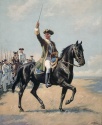 BAC; Montcalm sur les
BAC; Montcalm sur les
Plaines d'Abra... -
 Glissage sur les Plai
Glissage sur les Plai
nes d'Abraham -
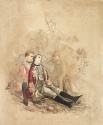 La mort du général Wo
La mort du général Wo
lfe lors de la ...
-
 Le monument à Jeanne
Le monument à Jeanne
D'Arc, Québec (... -
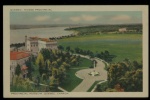 Le Musée provincial,
Le Musée provincial,
Québec -
 Les Plaines d'Abraham
Les Plaines d'Abraham
-
 Les Plaines d'Abraham
Les Plaines d'Abraham
vue de la tour...
-
 Photo Martin Fournier
Photo Martin Fournier
-
 Photo: Martin Fournie
Photo: Martin Fournie
r -
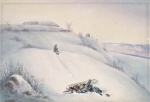 Pièce faisant partie
Pièce faisant partie
de : Colle... -
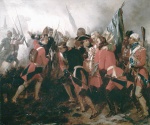 Pièce faisant partie
Pièce faisant partie
de : Colle...
-
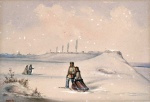 Pièce faisant partie
Pièce faisant partie
de : Colle... -
 Quebec - The Battlefi
Quebec - The Battlefi
elds [Québec - ... -
 Québec. Monument en l
Québec. Monument en l
'honneur de Wol... -
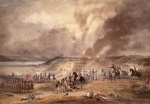 Représentation de la
Représentation de la
bataille des Pl...
Documents PDF
-
 Buffalo Bill sur les Plaines
Buffalo Bill sur les Plaines
-
 Extrait de l'article sur le congrès eucharistique de 1938
Extrait de l'article sur le congrès eucharistique de 1938
-
 Extrait du Premier rapport de la commission d’histoire et d’archéologie, 1907
Extrait du Premier rapport de la commission d’histoire et d’archéologie, 1907
-
 La Super Franco Fête sur les Plaines d'Abraham
La Super Franco Fête sur les Plaines d'Abraham
-
 Le Congrès eucharistique sur les Plaines d'Abraham
Le Congrès eucharistique sur les Plaines d'Abraham
-
 Lindbergh atterit sur les Plaines
Lindbergh atterit sur les Plaines

